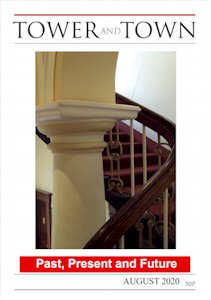

Tower and Town, August 2020 (view the full edition) (view the full edition)Not In My Back Yard?Recent estimates indicate the current housing shortage in the UK is greater than one million homes. These homes need to be built somewhere. However, the planning and construction of housing across the country is often delayed by local opposition: an attitude of 'Yes of course everyone has the right to have a decent place to live, so long as it does not change the views from my back garden, or along my favourite dog walking route.' On a local level the extension of existing settlements generally makes the most sense. This enables connections into existing utilities, and access for future residents to amenities and sustainable transport options. Inevitably, existing local residents often oppose such developments with protection of the environment and existing ecology often cited as a key reason for objection. These concerns are of course understandable and not without foundation. The UK is already one of the most nature-depleted countries in the world and biodiversity is continuing to decline. Arresting this decline is vital for ensuring the functioning of healthy ecosystems that provide the associated services (e.g food, water, clear air) on which people rely. Believe it or not, strategically planned, well designed development is one of the methods by which this can be achieved.
Whilst sensitively managed farmland has value for some important species (e.g skylark), it can be of limited value for many. On land such as this, well-designed housing projects that incorporate networks of multifunctional green space can have significant benefits for people and nature. The inclusion of green spaces, incorporating fruiting trees and shrubs, wildflower meadow areas, drainage ponds and even green roofs, provide food and refuge for a range of species. These spaces may also provide opportunities for existing residents to enjoy nature and maybe even a new place to walk the dog! Andrew Bumphrey |